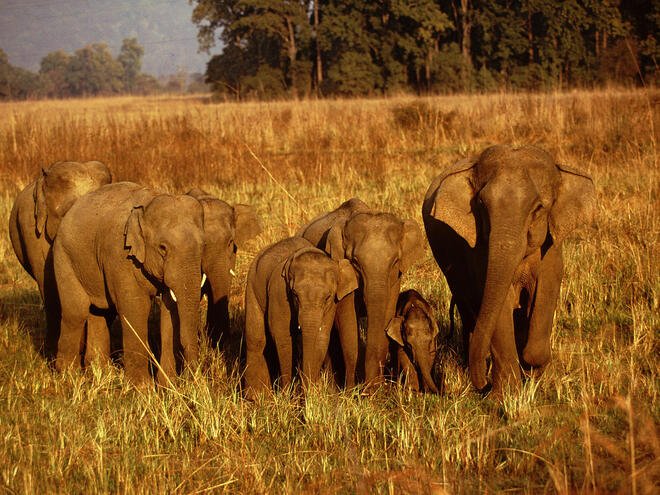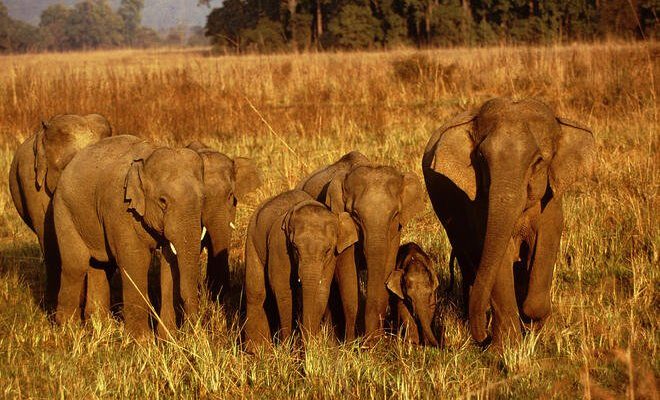
Imagine your garden. It’s not just a bunch of plants thrown together; it needs care, attention, and a bit of chaos to thrive. The Indian elephant contributes to the health of its ecosystem in much the same way. Whether it’s through their feeding habits or by creating pathways in dense forests, they play a pivotal role in ensuring that their world remains vibrant and diverse. So, let’s dive into the many ways these magnificent creatures impact their environment.
Understanding the Indian Elephant’s Habitat
The Indian elephant primarily resides in the grasslands, forests, and river valleys of India and Southeast Asia. They prefer areas with abundant water sources and rich vegetation. These habitats are not just their living spaces; they are integral to their role in the ecosystem.
Elephants are often called keystone species because their activities create a significant impact on their environment. For instance, when they push down trees to reach leaves, they make space for smaller plants to grow. This clearing of vegetation also benefits countless other species that rely on a diverse ecosystem. Without the activities of elephants, many habitats would eventually become overgrown and less varied, leading to decreased biodiversity.
You might be wondering why this matters. Well, biodiversity is like a safety net. The more diverse an ecosystem, the more resilient it is against diseases, climate change, and human interference. In short, Indian elephants help keep their habitats healthy and thriving.
The Role of Indian Elephants in Seed Distribution
One of the most important jobs of Indian elephants is seed dispersal. When elephants eat, they consume not just leaves and bark but also fruits and seeds. As they roam vast distances, they help spread these seeds in their dung, which acts as a natural fertilizer.
This seed dispersal is vital for the growth of many tree species, which would struggle to reproduce without the help of these giants. For example, the *Ficus* tree, a staple in many Indian forests, relies heavily on elephants for its reproduction. When seeds pass through the elephants’ digestive system, they come out ready to sprout.
You can think of elephants as natural gardeners that help plant trees across large landscapes. This process not only supports tree growth but also helps in creating new habitats for various animals, insects, and plants, leading to a richer ecosystem overall.
Elephants as Creators of Paths and Clearings
Have you ever noticed how some trails in the forest seem to be made by a giant? That’s typically the work of elephants! As they move through their habitat, elephants create paths that other animals use for travel and foraging. These trails can be essential for smaller animals, providing them with safe routes to food and water sources.
Moreover, when elephants push over trees or clear areas for feeding, they open up the forest floor to sunlight and rainfall. This act encourages the growth of grasses and shrubs, which are essential for many other species. Think of it as a big beautiful reset button for the ecosystem.
Without the trails and clearings created by these gentle giants, many smaller species might struggle to survive. Grazing animals, such as deer or antelopes, benefit from these open areas, as they can find food without the dense cover of trees.
The Impact of Indian Elephants on Water Sources
Water is life, and Indian elephants play a critical role in maintaining water sources in their habitats. By digging in riverbeds or creating waterholes, elephants help ensure that there are accessible water supplies for many animals.
During dry spells, elephants use their trunks to dig up dirt and create pools that can hold rainwater. These pools are a lifeline for various creatures, from birds to smaller mammals. It’s like elephants are building tiny reservoirs, allowing life to flourish in arid conditions.
Furthermore, as they wallow in mud and water, they help maintain the health of these sources. The nutrient-rich mud contributes to soil fertility, benefiting plant life in the vicinity. This, in turn, helps sustain the entire ecosystem.
How Elephants Influence Plant Growth
Elephants are herbivores, which means they primarily eat plants. Their feeding habits can significantly influence plant growth and diversity in their ecosystem. When elephants graze on certain plants, it prevents overpopulation of specific species, allowing for a more balanced plant community.
Some plants even depend on elephants for healthy growth. For instance, certain grasses and herbs thrive when grazed upon by elephants, as this process encourages new growth and diversity. This balance is essential for maintaining a healthy ecosystem.
Think of it this way: elephants are like nature’s lawnmowers. They help control the growth of vegetation, paving the way for different plant species to flourish. This variety not only supports other wildlife but also helps maintain the overall health of the ecosystem.
The Role of Elephants in Mitigating Climate Change
Elephants also contribute to climate regulation. By maintaining healthy forests and grasslands, they play a role in carbon sequestration—the process of capturing and storing carbon dioxide from the atmosphere. The more trees and plants there are, the more carbon dioxide is absorbed, which can help mitigate climate change.
Healthy ecosystems, supported by the presence and actions of elephants, can buffer against extreme weather changes and support more sustainable environments.
In essence, every time an elephant walks through its habitat, it’s not just wandering around; it’s contributing to a larger goal of creating a balance that benefits the planet and its inhabitants.
Conservation and the Future of Indian Elephants
Despite their importance, Indian elephants face numerous threats, from habitat loss to poaching. The destruction of forests for agriculture and urban development is leading to a decline in their populations. Without concerted efforts to protect these gentle giants, we risk losing not just the elephants themselves but the intricate ecosystems they support.
Conservation efforts are vital in maintaining elephant populations and their habitats. Protected areas, wildlife corridors, and community-based conservation initiatives are crucial in ensuring elephants can roam freely and continue their ecological roles.
You might feel inspired to contribute to these efforts, whether by supporting organizations dedicated to elephant conservation or educating others about their significance. Remember, every little bit helps, and together we can ensure that future generations can experience the wonder of these majestic creatures.
In a world that often feels disconnected from nature, the role of the Indian elephant reminds us of the intricate web of life that binds us all. Protecting them is more than just about preserving a species; it’s about nurturing an entire ecosystem that benefits countless forms of life, including our own. So, let’s celebrate these incredible animals and the vital roles they play in the health of our planet.

